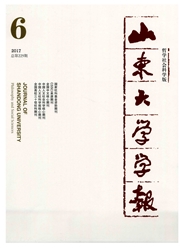

 中文摘要:
中文摘要:
“丝绸之路经济带”作为我国新时期协调区域经济发展、深化向西开放的重要经济发展战略,研究其经济关联效应具有重要的意义。使用空间理论和计量方法分析“丝绸之路经济带”国内段所属省区经济关联程度及演变,运用改造后的C-D生产函数结合空间误差模型,并加入代表区域经济关联的市场潜能这一新经济地理变量,以2000年到2013年135个地级市及直辖市组成的面板数据为基础,用以揭示关联性对“丝绸之路经济带”经济发展影响程度。实证结果表明:“丝绸之路经济带”国内段区域关联模式从明显的“低低型区域经济关联”转变为明显的“高低型区域经济关联”、“高高型区域经济关联”,并形成各省份以城市群为增长极的多极化发展模式,同时市场潜能每提高1%,人均生产总值提高0.12%。
 英文摘要:
英文摘要:
The study of regional economic correlation and the spatial spillovers effects of The Belt and Road Initiatives are of great practical and theoretical significance to promote the coordinated development of regional economy and long-term stability. In this paper, we analyze the regional economic correlation of the Silk Road economic belt through introducing a new economic geography variable "market potential". We found that the regional correlation of the Silk Road economic belt is becoming stronger and stronger. If market potential is increased by 1%, there is a 0.12 percentage point increase for regional economy.
 同期刊论文项目
同期刊论文项目
 同项目期刊论文
同项目期刊论文
 期刊信息
期刊信息
